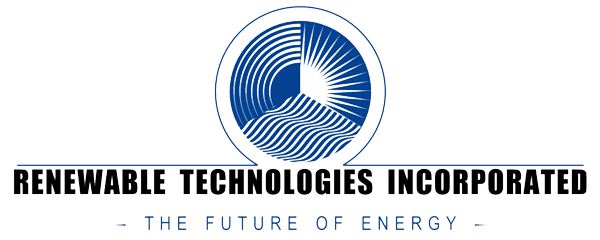As renewable energy becomes more and more popular, energy storage is becoming a critical piece of the puzzle. Renewable energy sources like solar and wind power are intermittent, which means they are most efficient at generating energy when the sun is shining or the wind is blowing. This can be a problem because it’s not always possible to predict when those things will happen–but fortunately, as renewable technologies continue to develop, scientists, inventors, and entrepreneurs have come up with clever adaptations. That’s where energy storage comes in. In this article, we will touch on the basics of energy storage, including the pros and cons of hiring energy storage contractors to update your renewable energy investments.
How Does Energy Storage Work?
Happily, renewable technologies have come a long way in the last few decades, offering an ever-widening range of different energy sources and cultivation techniques with continuously improving lifespans and rates of efficiency. However, for renewable energies like solar or wind power that are partially dependent on external factors to harness the most energy on any given day, there are systems of battery storage backups that can store energy on the most productive days to make up for those that yield less total energy.
This type of battery system software relies on algorithms and computerized systems to control energy production and allocate collected energy to the battery system. Should a home or business encounter a slow day for harnessing energy for on-demand purposes, a full battery storage system can require them with the power they need to keep their electricity flowing. Some industry leading examples of energy storage include compressed air energy storage (in which released compressed air generates electricity by passing air through a wind turbine, mechanical gravity energy storage (why relies on the pull of gravity of concrete blocks to generate electricity), and flow batteries (which rely on two chemicals dissolved in solvents and separated by a membrane, creating rechargeable fuel cells).
How Much Does Energy Storage Cost?
While there is an initial expense associated with investing in a photovoltaic battery system for example, if you decide to install solar panels on the roof of your home or business, the good news is, this cost has decreased nearly 70% in just three years between 2015-2018. From roughly $2,250 in 2015, prices for these systems have notably shrunk to around $625 for installation in 2018—and as the technology improves and infrastructure for building these battery systems increasingly develops, the cost is only expected to continue to decrease. What was once a cost-prohibitive venture for the average American is relatively rapidly becoming accessible, especially in the last decade or so—leading more and more people to invest in renewable energy like solar power.
Pros and Cons of Renewable Energy Storage
Of course, no decision is very black and white—and the choice to invest in renewable energy sources like wind or solar does on some level require a leap of faith. In this section, we will take a look at the benefits and potential drawbacks of investing in renewable energy that relies on storage systems for seamless electric power throughout your home or office.
Pros of Investing in Renewable Energy Storage Systems
Are you in the fence about making the significant adjustment to alternative energy sources other than coal, natural gas, or fossil fuels to power your home or business? Here are some primary benefits you’re going to want to consider first!
- Save on utility bills: While it’s true that the initial investment of installing solar panels and photovoltaic (PV) battery backups does come at a significant upfront cost, this expense is generally paid off between 5-10 years, helping homeowners save on their power bill every month—if not entirely eliminating it.
- Actively turn a profit: What’s more, after these panels and batteries pay for themselves, they also have a tendency to last for 25 years or more, meaning you will have 15-20 years of pure profit and freedom from the grid. Any extra energy you do not use, you can even sell back to your local power company.
- Add value to your investment: If you ever plan to move homes or business locations someday, the simple presence of solar panels can increase the overall going price of the property by as much as 4%–not to mention it is a great attention-grabber for prospective shoppers. Especially if they are well maintained, this can add value to your home that may be tangible at a rate of 10% Return On Investment (ROI) or more.
- Seamless power in all weather and seasons: Some of us don’t leave in Arizona—the sunniest state in the U.S.—but are still interested in what solar power can do for us. The good news is, even on overcast days, solar panels still harvest energy—just at a decreased rate than when in full sun exposure. A battery system helps to regular energy usage, providing less productive energy harvesting days with reserved energy until the sun comes out again.
- Can be recycled: Happily, energy storage systems and the photovoltaic cells they rely on have increasingly long life spans, and can even be recycled after they are no longer operating at peak efficiency.
- Creates jobs: Energy storage contractors know how many jobs are expected to grow in the energy sector thanks to renewable sources of electricity and thermal heating. In fact, by 2050, it is projected that roughly 8 million jobs will be produced, further building infrastructure around clean energy.
Downsides to Installing Renewable Energy Storage Systems
It’s important to look at both sides when making a big investment, so we’ve included some potential downsides to consider when looking to go renewable as well!
- Initial cost: The initial expense of installing the energy harnessing equipment, energy storage systems, or even switching to a different power company offering green energy sources can sometimes come with an upfront fee. This can cost between $15,000-$25,000 in a residential setting, so it’s not exactly chump change—but it’s important to remember these panels will pay for themselves in potentially as little as two years.
- Require upkeep: While upkeep is generally considered minimal for solar panels, it is important to make sure they are free from debris like dirt, leaves, and leaf litter so the panel beneath has full sun exposure. For some, this may mean occasionally getting on the roof, which can be off-putting, dangerous, or both.
- Aren’t always necessarily 100% zero carbon emissions: While it cannot be denied that installing solar panels progresses the conversation about how and where we get our energy and the impact that energy consumption has on our planet (not to mention weening us off of our dependency on foreign fossil fuels), it must also be said that so far, no renewable energy source is completely 100% carbon-free. For example, producing solar panels, wind panels, and mining and shipping the parts for these technologies still relies on traditional transportation and mining methods, which currently rely on older sources of power.
Best CA Energy Storage Contractors: Renewable Technologies, Inc.
Hopefully over the course of this article, you now have a clearer idea of what it means to invest in renewable energy systems and feel confident to start conversation with a couple energy storage contractors capable of moving your energy sourcing into the 21st century. Besides increasing your own autonomy by literally generating electricity on your roof or in your backyard, you bring power back to your local country and quite relying on fossil-fuel peddling countries that know how much we rely on their exports. What’s more, you’re likely to save some money along the way, all well creating jobs, new infrastructure, and generally boosting the local economy.
Are you looking for California’s best solar energy storage contractors? Contact the professionals at Renewable Technologies, Inc. today to learn how we can help you reduce utility costs!

